In the sandy desert of Namibia in southern Africa, many “fairy circles” form and then disappear after a few years without anyone explaining it. The duration of these circles is not the same, but can last as long as a person’s life.
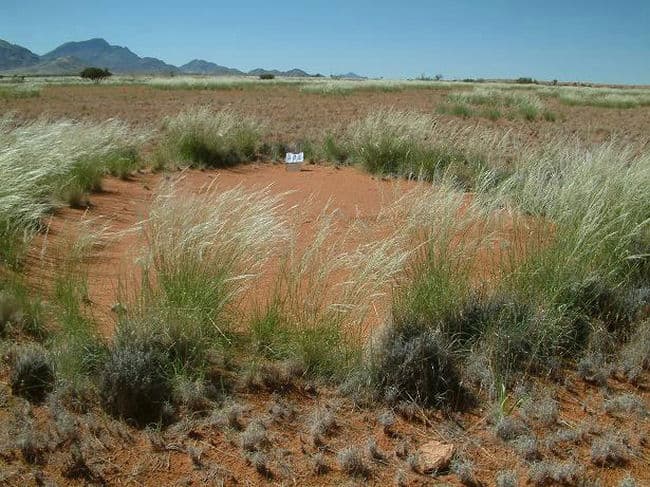
Some small circles last an average of 24 years, while larger circles “live” up to 75 years, a study published in the journal PloS ONE. This study also says little about why those circles form, exist, and then disappear after a few decades.
Biologist Walter Tschinkel at Florida State University began researching mysterious circles in Namibia in 2005. Thousands of strange circles exist in the red sandy soil area. A short time after the circle was formed, grass also grew along the edge of the circle.
Very few scientists have ever studied fairy circles, because they are located in very remote places, up to 180km from the nearest village. This is an arid area where antelopes, ostriches, leopards and several other large animals often roam.
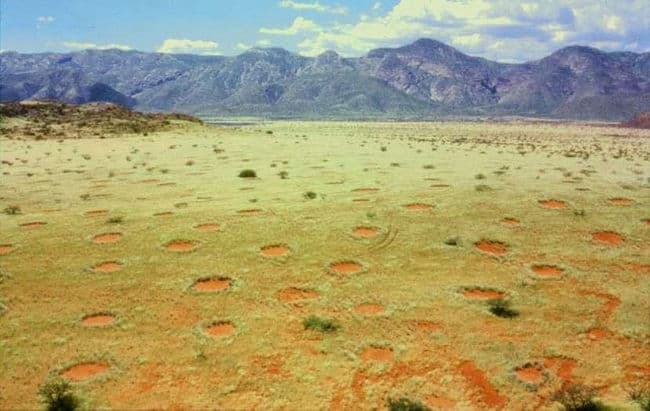
Initially, Tschinkel theorized that the circles formed around the mouths of underground termite mounds. But after digging, Tschinkel found no evidence of a termite nest below. Other explanations, such as differences in soil nutrients or grass seeds dying in areas where toxic fumes are released from the soil, have all been tested as incorrect.
To date, little is known about even the life cycle of these circles. With the help of the nature conservation team, satellite images and aerial photos, Tschinkel was able to compare images from 2004 and 2008. He found that the circles were relatively stable. The diameter of the smallest circle is nearly 2m, of the largest circle is nearly 12m. The wind blew constantly on the dry land, causing many circles to lose their grass edges so they looked like ghost circles. Tschinkel estimates that the age of these circles is between 30 – 60 years.
Until 2014, they were known to occur only along the Namib Desert in southern Africa, but identical rings have since been discovered near the mining town of Newman in Western Australia.
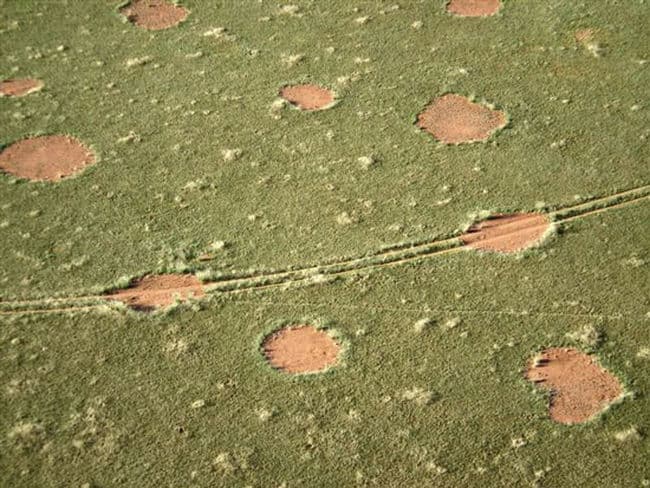
However, the “fairy circles” in Namibia are still the most famous and attractive to scientists, so they have been studying them since the 1970s. Theories about their formation and purpose There are many, but so far no one has been able to prove that they are the real answer to this decades-old mystery.
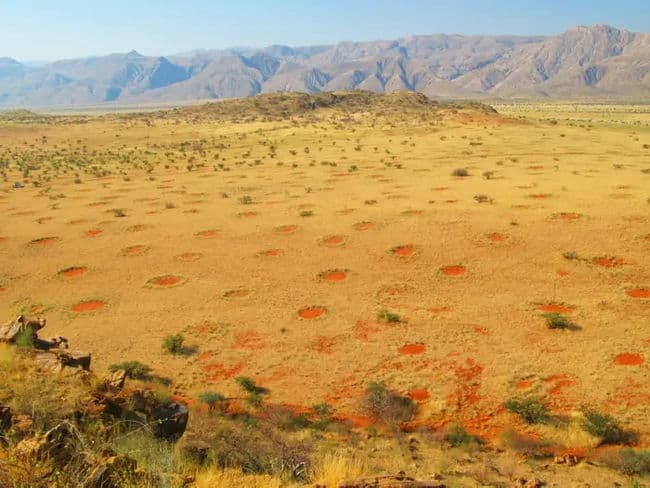
“It was an empty circular area with nothing on it. When you look at it from the air or from high points, it almost looks like measles spots,” describes Professor Eugene Marais, Research Director at the Gobabeb-Namib Research Institute.
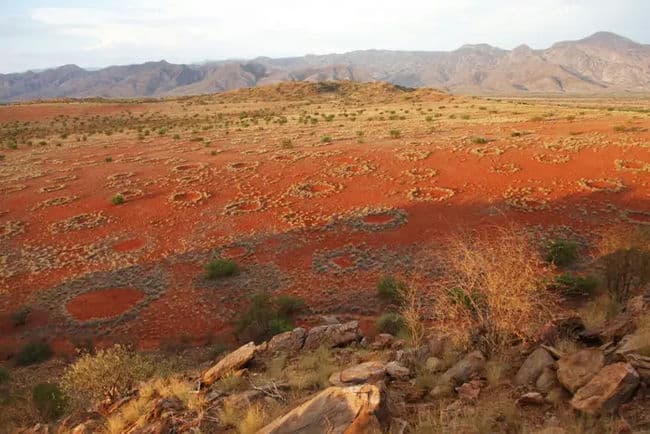
Aside from mystical and science fiction explanations like fairies dancing in circles and preventing plants from growing, or UFOs landing in the desert at night, there are some more plausible explanations. about why fairy circles exist.
Some scientists believe it has something to do with the termites that have made the Namib their home, and research has shown that there are termite colonies under most of these barren circles bordering vegetation. The theory is that termite colonies invade and conquer each other, but when termite colonies of similar size meet, they cannot destroy each other, so they create “buffer zones”.
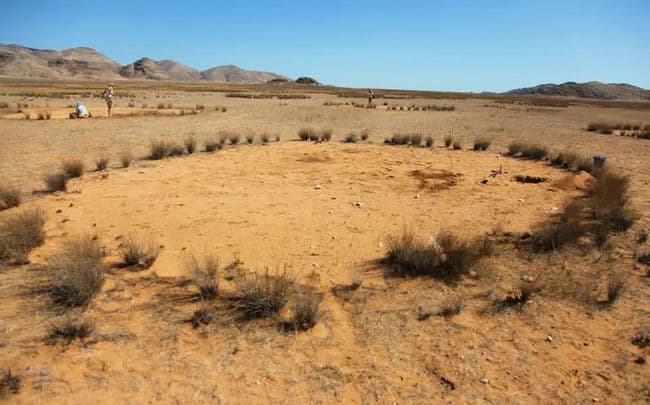
Another plausible theory is that these “fairy circles” are the result of plant species competing for the scarce water that falls in the Namib every year. Plants help their nearest neighbors by providing shade and conserving water on the soil surface, but hinder the growth of other distant plants by growing long roots and absorbing water from the soil.
There are also those who believe that the mysterious circles are somehow connected to the poisonous Euphorbia bushes that grow in the Namib. Some remains of these plants have been found in mysterious circles. But the problem is that no one knows for sure whether any of these theories are correct.
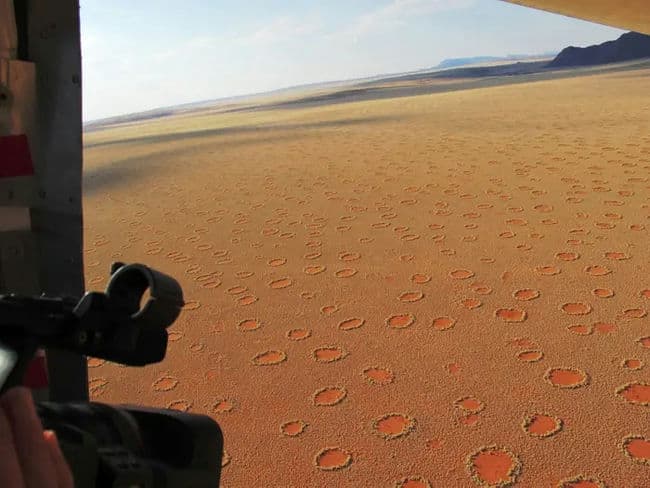
Research carried out on newer mystery circles in Australia has found that termites are not the cause of barren plots but are the result of abiotic processes such as mechanical weathering. of soil due to heavy rain during cyclones, extreme temperatures and evaporation.
“The vegetation gap caused by worker termites is half the size of the mysterious circle and much less organized. In most cases, we don’t even find any termite species elsewhere in Australia that prevent grass growth,” explains Dr. Stephan Getzin from the University of Göttingen.
Currently, the mystery of the rings in Namibia remains unsolved, although scientists have certainly made progress since the 1970s.

